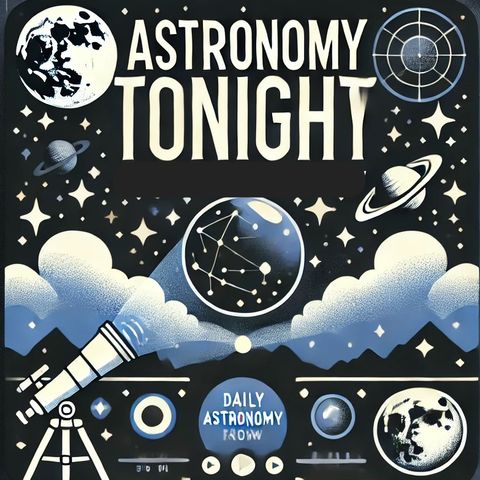Astronomy Tonight for - 11-12-2024

Descarga y escucha en cualquier lugar
Descarga tus episodios favoritos y disfrútalos, ¡dondequiera que estés! Regístrate o inicia sesión ahora para acceder a la escucha sin conexión.
Astronomy Tonight for - 11-12-2024
Esta transcripción es generada automáticamente. Ten en cuenta que no se garantiza una precisión absoluta.
Descripción
Ah, November 12th! A date that twinkles with astronomical significance. Let's set our celestial time machine to this very day in the year 1980, when something truly extraordinary happened in...
mostra másOn November 12, 1980, the Voyager 1 spacecraft made its closest approach to Saturn, coming within 124,000 kilometers (77,000 miles) of the planet's cloud tops. This flyby was a pivotal moment in space exploration and our understanding of the solar system's second-largest planet.
Picture this: A lonely spacecraft, launched three years earlier, hurtling through the vast emptiness of space, finally reaching its rendezvous with the ringed giant. As Voyager 1 zipped past Saturn, it captured unprecedented, breathtaking images of the planet's iconic rings in exquisite detail. Scientists back on Earth were practically doing cartwheels of joy as data streamed in, revealing secrets of Saturn that had eluded earthbound telescopes for centuries.
But wait, there's more! During this close encounter, Voyager 1 also gave us our first detailed look at several of Saturn's moons. It discovered three new moons and provided detailed images of others, including the mysterious, cloud-shrouded Titan.
One of the most exciting discoveries was the complex structure of Saturn's rings. Voyager 1 revealed that what appeared as a few distinct rings from Earth were actually composed of thousands of smaller ringlets. It was like finding out that what you thought was a simple necklace was actually an intricate, shimmering tapestry of cosmic ice and dust.
The spacecraft also observed strange spoke-like features in the rings, which scientists are still puzzling over to this day. Some think they might be caused by electromagnetic interactions between the rings and Saturn's magnetosphere. It's like Saturn decided to play Etch A Sketch with its rings, just to keep us guessing!
This flyby was so successful that it paved the way for future missions to Saturn, including the spectacular Cassini mission that ended in 2017. So, the next time you look up at the night sky and spot that yellowish dot that is Saturn, remember the little spacecraft that, on this day in 1980, gave us our first close-up look at the jewel of our solar system.
Voyager 1 has since left our solar system and entered interstellar space, carrying with it a golden record of Earth sounds and images. Who knows? Maybe on some future November 12th, it'll have its next big adventure among the stars!
Información
| Autor | QP-4 |
| Organización | William Corbin |
| Página web | - |
| Etiquetas |
Copyright 2024 - Spreaker Inc. an iHeartMedia Company
